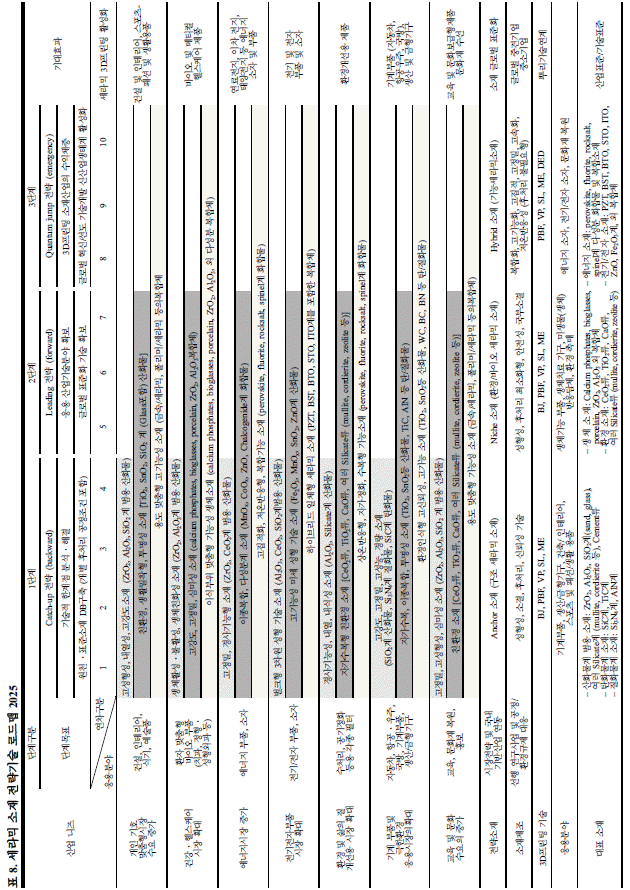- [Korean]
- R&D Strategy for 3D Printing Metal Powders
-
Jai-Sung Lee
-
J Korean Powder Metall Inst. 2015;22(2):138-145. Published online April 1, 2015
-
DOI: https://doi.org/10.4150/KPMI.2015.22.2.138
-
-
1,180
View
-
9
Download
-
2
Citations
-
 PDF PDF
-
Citations
Citations to this article as recorded by  - Effect of heat treatment on corrosion resistance and adhesion property in Zn-Mg-Zn multi-layer coated steel prepared by PVD process
Jong Min Byun, Su-Ryong Bang, Hyun Woo Kim, Tae-Yeob Kim, Suk-Jun Hong, Young Do Kim
Surface and Coatings Technology.2017; 309: 1010. CrossRef - High-temperature thermo-mechanical behavior of functionally graded materials produced by plasma sprayed coating: Experimental and modeling results
Kang Hyun Choi, Hyun-Su Kim, Chang Hyun Park, Gon-Ho Kim, Kyoung Ho Baik, Sung Ho Lee, Taehyung Kim, Hyoung Seop Kim
Metals and Materials International.2016; 22(5): 817. CrossRef
- [Korean]
- The Effect of Composition on Hydrogen Reduction Behavior of Ball-milled WO3-CuO Nanocomposite Powders
-
Sung-Soo Jung, Yun-Sung Kang, Jai-Sung Lee
-
J Korean Powder Metall Inst. 2006;13(3):205-210.
-
DOI: https://doi.org/10.4150/KPMI.2006.13.3.205
-
-
417
View
-
2
Download
-
2
Citations
-
 Abstract Abstract
 PDF PDF
- The effect of Cu content on hydrogen reduction behavior of ball-milled WO_3-CuO nanocomposite powders was investigated. Hydrogen reduction behavior and reduction percent(alpha) of nanopowders were characterized by thermogravimetry (TG) and hygrometry measurements. Activation energy for hydrogen reduction of WO_3 nanopowders with different Cu content was calculated at each heating rate and reduction percent(alpha). The activation energy for reduction of WO_3 obtained in this study existed in the ranging from 129 to 139 kJ/mol, which was in accordance with the activation energy for WO_3 powder reduction of conventional micron-sized.
-
Citations
Citations to this article as recorded by  - Microstructural Feature of Full-densified W-Cu Nanocomposites Containing Low Cu Content
Jai-Sung Lee, Sung-Soo Jung, Joon-Phil Choi, Geon-Yong Lee
Journal of Korean Powder Metallurgy Institute.2013; 20(2): 138. CrossRef - Consolidation of Iron Nanopowder by Nanopowder-Agglomerate Sintering at Elevated Temperature
Jai-Sung Lee, Joon-Chul Yun, Joon-Phil Choi, Geon-Yong Lee
Journal of Korean Powder Metallurgy Institute.2013; 20(1): 1. CrossRef
- [Korean]
- Fabrication of Sn and SnO2 Nanopowders by Low-Temperature Phase Transformation Method
-
Kun-Jae Lee, Yeon-Jun Joo, Yong-Dae So, Nam-Hoon Kim, Jai-Sung Lee, Yong-Ho Choa
-
J Korean Powder Metall Inst. 2006;13(1):46-51.
-
DOI: https://doi.org/10.4150/KPMI.2006.13.1.046
-
-
 Abstract Abstract
 PDF PDF
- Through the volume change of Sn in a low-temperature phase transformation, the Sn nanopowder with high, purity, was fabricated by an economic and eco-friendly process. The fine cracks were spontaneously generated. in, Sn ingot, which was reduced to powders in the repetition of phase transformation. The Sn nanopowder with 50 run in size was obtained by the 24th repetitions of phase transformation by low-temperature and ultrasonic treatments. Also, the SnO_2 powder was fabricated by the oxidation of the produced Sn powder to the ingot and milled by the ultrasonic milling method. The SnO_2 nanopowder of 20 nm in size was fabricated after the milling for 180 h.
- [Korean]
- Brazing Adhesion Properties of Ag Coated W-Ag Electric Contact on the Cu Substrate
-
Hyun-Goo Kang, Yun-Sung Kang, Jai-Sung Lee
-
J Korean Powder Metall Inst. 2006;13(1):18-24.
-
DOI: https://doi.org/10.4150/KPMI.2006.13.1.018
-
-
 Abstract Abstract
 PDF PDF
- The brazing adhesion properties of Ag coated W-Ag electric contact on the Cu substrate have been investigated in therms of microstructure, phase equilibrium and adhesion strength. Precoating of Ag layer (3µm in thickness) on the W-40%Ag contact material was done by electro-plating method. Subsequently the brazing treatment was conducted by inserting BCuP-5 filler metal (Ag-Cu-P alloy) layer between Ag coated W-Ag and Cu substrate and annealing at 710°C in H_2 atmosphere. The optimum brazing temperature of 710°C was semi-empirically calculated on the basis of the Cu atomic diffusion profile in Ag layer of commercial electric contact produced by the same brazing process. As a mechanical test of the electric contact after brazing treatment the adhesion strength between the electric contact and Cu substrate was measured using Instron. The microstructure and phase equilibrium study revealed that the sound interlayer structure was formed by relatively low brazing treatment at 710°C. Thin Ag electro-plated layer precoated on the electric contact (3µm in thickness) is thought to be enough for high adhesion strength arid sound microstructure in interface layer.
|







